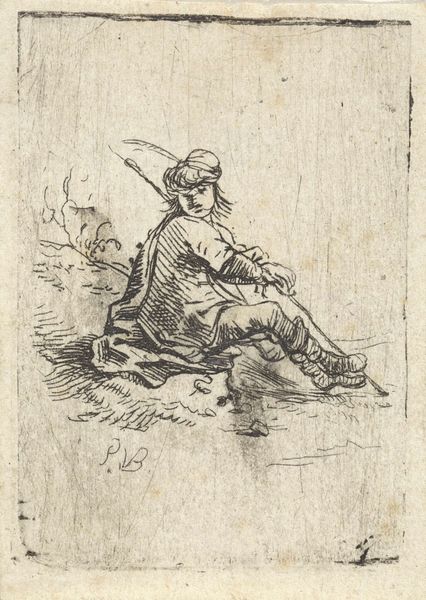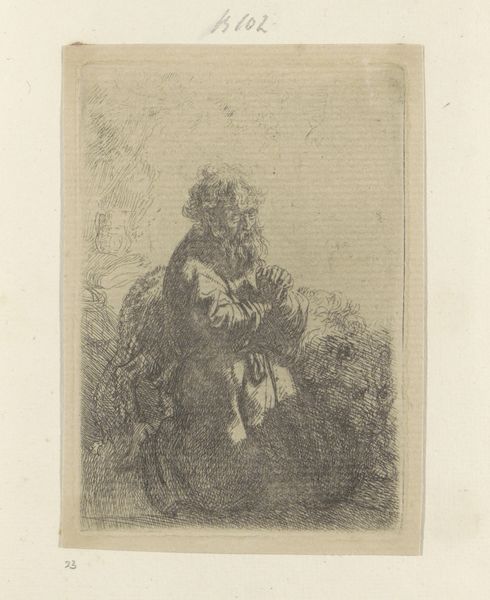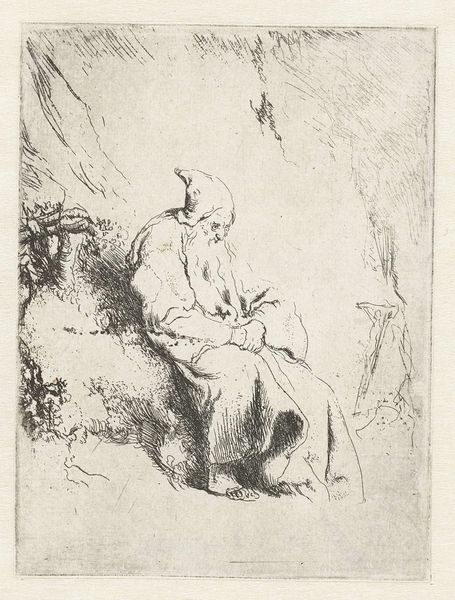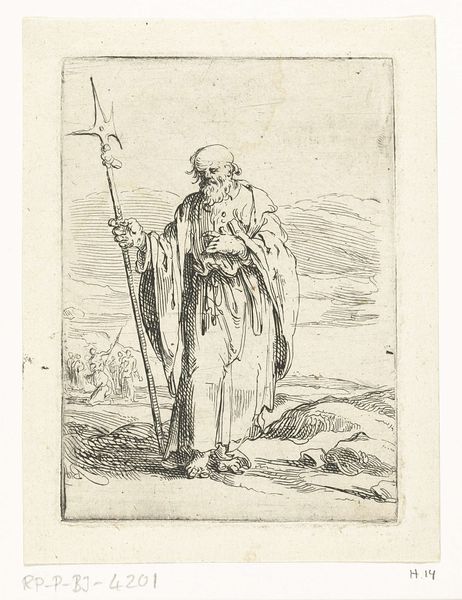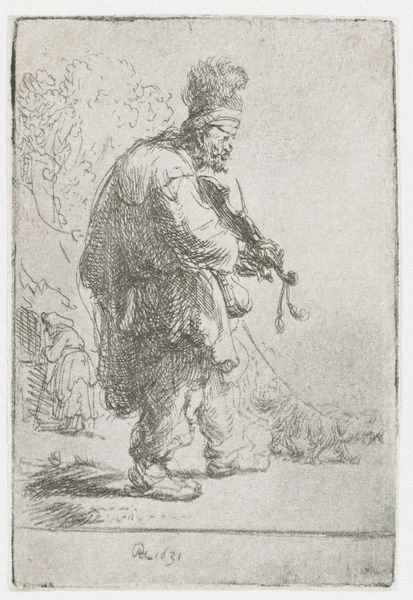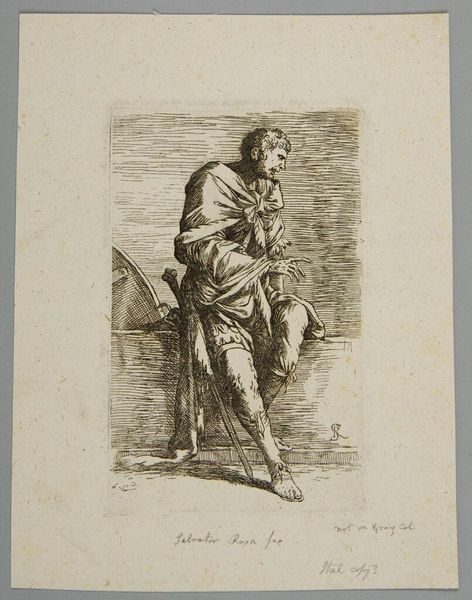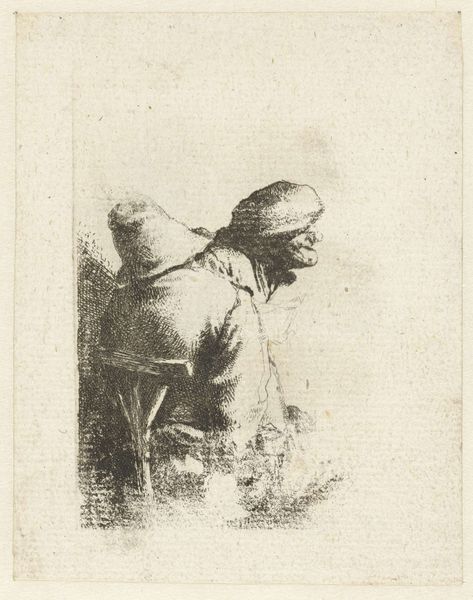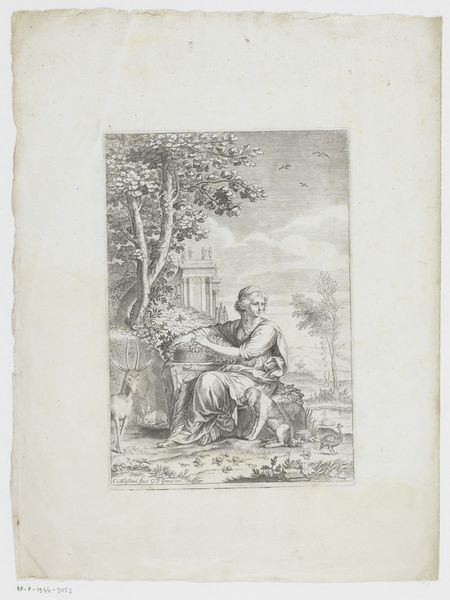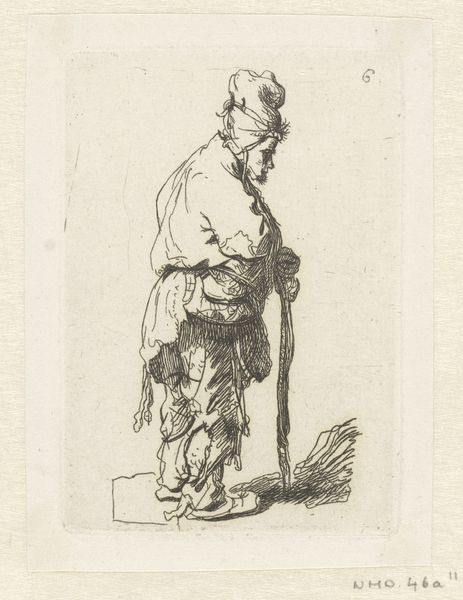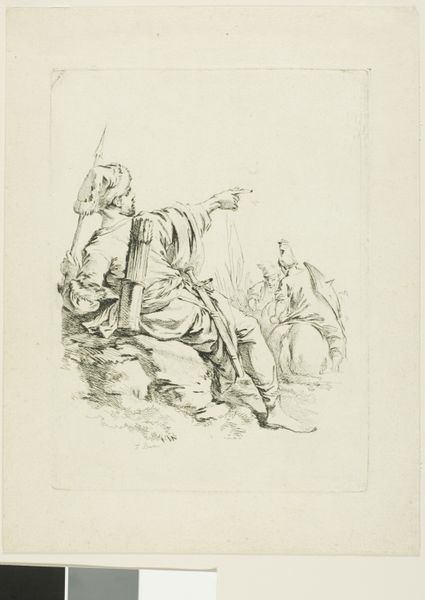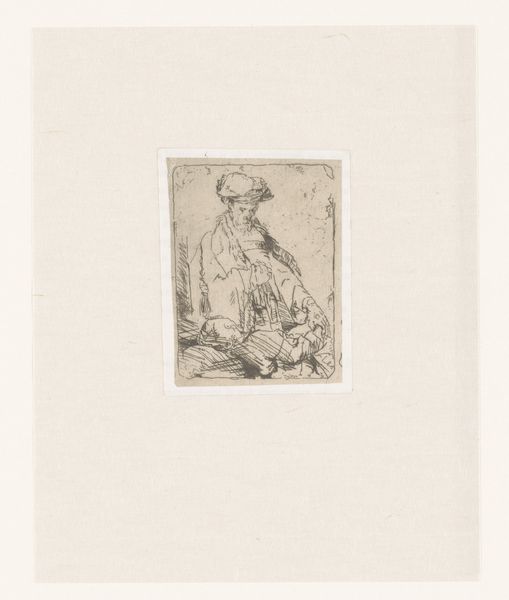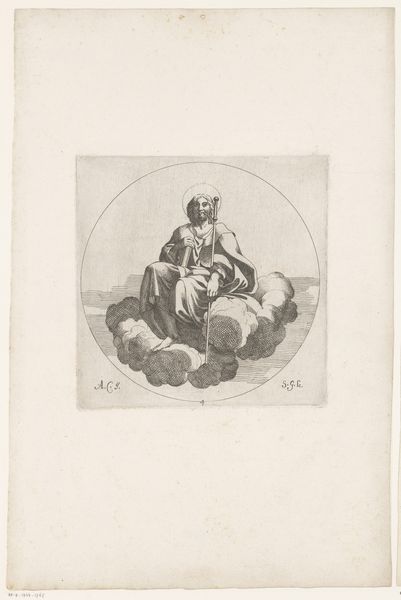
etching
#
portrait
#
baroque
#
etching
#
figuration
#
genre-painting
Dimensions: height 34 mm, width 34 mm
Copyright: Rijks Museum: Open Domain
Editor: We’re looking at "Zittende vrouw," or "Seated Woman," an etching by Pieter Bodding van Laer, made sometime between 1609 and 1642. It's at the Rijksmuseum. I find her kind of mysterious. How do you read this piece, especially considering the time it was made? Curator: That’s a great observation. What strikes me immediately is the way van Laer situates this figure within a specific social context. The Baroque era, with its theatricality, was also a period of expanding empires and heightened social stratification. Consider where such an image might be displayed and consumed. Is this meant to be a romantic vision, a commentary on the laboring class, or something else entirely? Editor: So it’s less about her individual story and more about how she fits into the broader society of the time? I’m used to thinking about Baroque art as being about rich patrons! Curator: Exactly! Van Laer, although influenced by the Baroque style, engages with genre painting, depicting everyday life. Etchings like this were more accessible, distributed through printmaking. Therefore, the depiction and, perhaps more importantly, the reception of the image are very complex. What does her dress signify? What about the object she holds? These clues provide insight. Editor: The object is quite unusual! Now I am curious: if you were to put this in conversation with another piece from the same period, what would you pick? Curator: I would be tempted to compare this with some of the grander portraits from the Dutch Golden Age. Think of a Frans Hals civic guard portrait. What do these very different artistic approaches tell us about the power dynamics of the period? Editor: That's fascinating! I hadn't thought of comparing them like that. It makes me appreciate the nuance in representing different social classes in art of the period. Curator: Indeed! Recognizing those visual conversations enriches our understanding of the public role art played and continues to play in society.
Comments
No comments
Be the first to comment and join the conversation on the ultimate creative platform.
